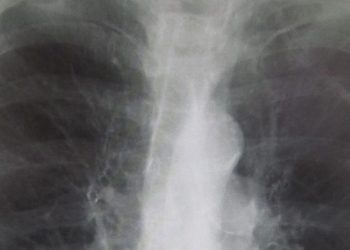Shorter antibiotic therapy courses likely noninferior in the treatment of complicated urinary tract infections and bacteremia
1. In bacteremic patients with complicated UTI, a 10-day course of typical antibiotics or a 7-day course of IV beta-lactams or highly available antibiotics were statistically similar to 14-day courses when comparing 30-day reinfection and antibiotic-resistant infection rates.
Evidence Rating Level: 2 (Good)
Urinary tract infections (UTIs) are the most common bacterial infections worldwide. Complicated UTIs (cUTIs) occur in the setting of pre-existing structural or functional abnormalities of the urinary tract (or any male patient with UTI), and generally have poorer outcomes. Currently, there is ongoing uncertainty regarding the optimal duration of antibiotic therapy. In this retrospective cohort study, researchers analyzed patient cases with both a cUTI and current gram-negative bloodstream infection who either received 7 days (n = 265), 10 days (n = 382), or 14 days (n = 452) of antibiotic therapy. E. Coli, K. pneumoniae, P. mirabilis, and P. aeruginosa were the most common pathogens isolated in this cohort, respectively. Inverse probability of treatment weighting (IPTW) incorporated propensity scores to attempt to account for several factors/baseline differences between patients. Those who received 7 days of therapy had an approximately 2.5-fold increase in odds of recurrent infection within 30 days of treatment completion compared to those in the 14-day arm (adjusted OR [aOR]: 2.54; 95% CI: 1.40–4.60; P = .002). However, there was no increase in the odds of recurrent infection for those in the 10-day arm compared to the 14-day arm ([aOR]: .99; 95% CI: .52–1.87; P = .99). Of the 76 patients (7% of total) who had a recurrent infection within 30 days, 14 of these (18%) had subsequent antibiotic-resistant infections. Two were from the 7-day arm, two from the 10-day arm, and ten were from the 14-day arm (P = 0.10). Additionally, an analysis of 7 days versus 14 days of treatment using highly bioavailable agents was completed. There was no difference in odds of recurrent infection between the 7-day and 14-day IPTW cohorts when using IV beta-lactams or other high bioavailability antibiotics (aOR: .76; 95% CI: .38–1.52). Therefore, the findings in this study may suggest that for some bacteremic patients with cUTI, 7 days of highly bioavailable or IV antibiotics may be sufficient for some, whereas 10 days may be more useful for others. Study findings are in concordance with new practice developments across medicine attempting to shorten the standard duration of therapy for various infections, and may be used to further guideline development.
Click to read the study in Clinical Infectious Diseases
Image: PD
©2023 2 Minute Medicine, Inc. All rights reserved. No works may be reproduced without expressed written consent from 2 Minute Medicine, Inc. Inquire about licensing here. No article should be construed as medical advice and is not intended as such by the authors or by 2 Minute Medicine, Inc.







